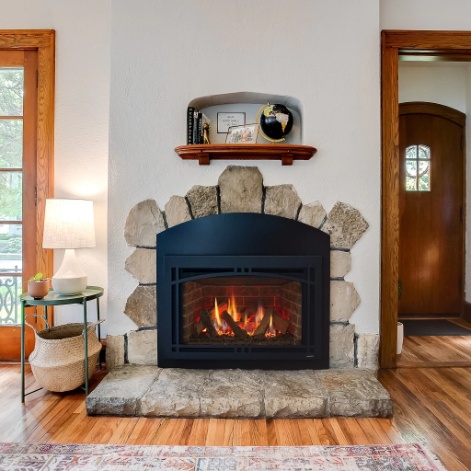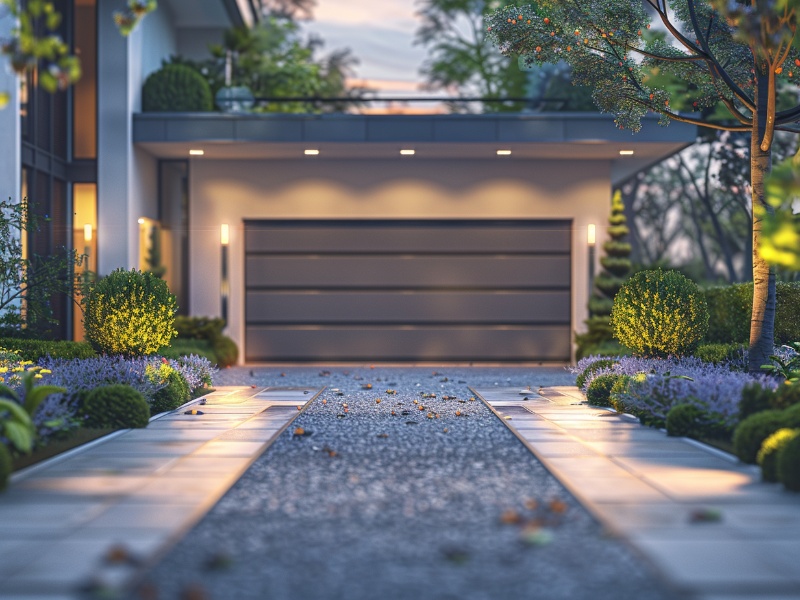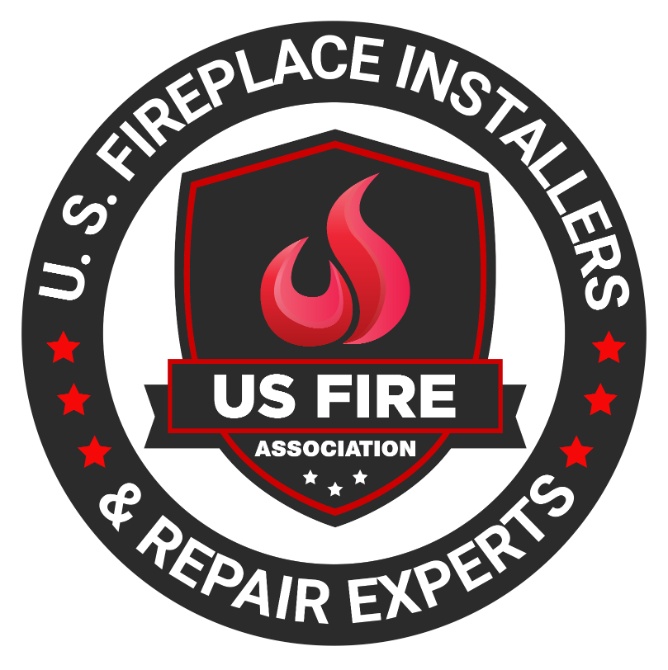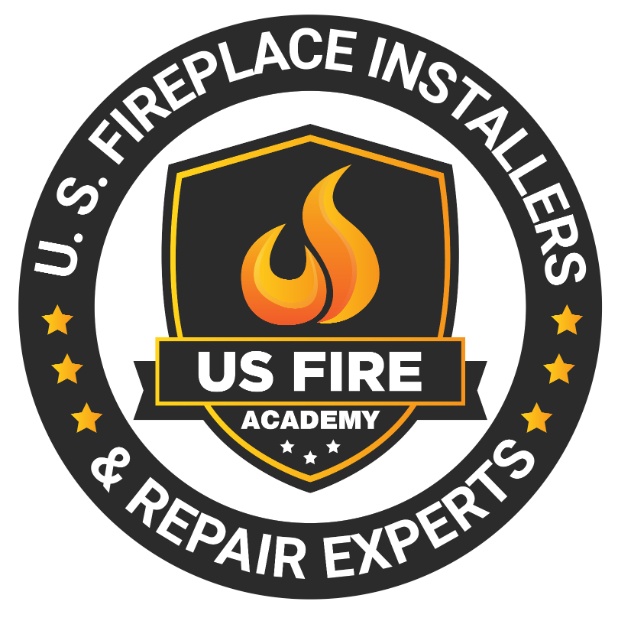Table of Contents
Are you considering enhancing your outdoor space with a touch of warmth and luxury? Read on to learn how to create a luxurious backyard oasis with an outdoor gas fireplace.
This article explores the benefits of selecting an outdoor gas fireplace, factors to think about before installation, and a detailed guide on crafting a striking outdoor fireplace.
Additionally, maintenance and safety tips will help keep your fireplace both beautiful and safe in your outdoor living area.
Why Choose an Outdoor Gas Fireplace?
When considering an outdoor living space, choosing an outdoor gas fireplace adds elegance, comfort, and ambiance to your backyard oasis.
The convenience, cleanliness, and versatility of an outdoor gas fireplace make it a popular choice for enhancing outdoor entertainment and relaxation areas.
An outdoor gas fireplace creates a cozy gathering spot for evening conversations or gatherings with friends and family.
The ease of use and control over the flames enable you to set the perfect ambiance for any occasion.
The clean-burning nature of gas eliminates the need for wood cleanup, providing a more enjoyable and hassle-free outdoor experience.
Available sleek design options can complement various styles and enhance the overall look of your outdoor space, making it a focal point for both warmth and visual appeal.
Convenience
The appeal of an outdoor gas fireplace lies in its immediate heat and easy operation.
With a simple push of a button, you can create a cozy retreat in your backyard oasis, adding elegance and comfort to your outdoor living space.
This luxurious addition offers warmth and enhances the ambiance, making gatherings with friends and family more inviting.
Imagine yourself on a cool evening, surrounded by flickering flames and laughter in the air as you enjoy the radiant heat.
The versatility of an outdoor gas fireplace allows you to extend your outdoor living season, ensuring comfort and style in your alfresco interactions.
The user-friendly nature and minimal maintenance make it a practical yet exquisite choice for enhancing your outdoor space.
Cleanliness
In contrast to traditional wood-burning fire features, an outdoor gas fireplace offers a cleaner and more convenient alternative.
Its sleek design and easy installation make it a suitable addition to any patio or outdoor seating area, enhancing both the aesthetics and functionality of the outdoor space.
With its contemporary aesthetic and streamlined appearance, an outdoor gas fireplace serves not only as an elegant focal point but also requires minimal maintenance compared to wood-burning options.
The uncomplicated installation process allows you to enjoy the warmth and ambiance of a fire feature without the mess and inconvenience associated with handling wood or cleaning up ash.
This efficient and tidy solution seamlessly integrates into the outdoor design, creating a warm and inviting atmosphere for gatherings and relaxation.
Versatility
The outdoor gas fireplace is a versatile addition that offers relaxation, warmth, and entertainment in your backyard oasis.
It can create a cozy retreat for family gatherings or a stylish outdoor entertainment area, elevating the luxury and ambiance of your outdoor space.
With its flickering flames capturing attention, the outdoor gas fireplace serves not only as a functional fire feature but also as a statement piece.
Picture yourself enjoying the warmth and glow of the fire with loved ones on a chilly evening, creating the perfect setting for storytelling or relaxation under the stars.
The fireplace’s design and placement flexibility allow for seamless integration into various outdoor styles, whether modern, rustic, or traditional.
This transformation turns your outdoor space into a versatile hub for relaxation and entertainment.
Factors to Consider Before Installing an Outdoor Gas Fireplace
When preparing to install an outdoor gas fireplace, it is important to consider various factors to ensure it is a suitable addition to your outdoor living space.
Selecting the appropriate location for the outdoor gas fireplace is crucial, as it influences the overall ambiance and safety of the area.
The size of the fireplace should be proportional to your outdoor space, neither dominating it nor appearing too small to be noticed.
Matching the style of the fireplace to your outdoor decor is important, whether you prefer a modern, contemporary design or a more traditional, rustic appearance.
Setting a realistic budget is essential to prevent unexpected expenses and facilitate a smooth installation process.
Location
The positioning of an outdoor gas fireplace plays a crucial role in its functionality and aesthetic impact within a backyard setting.
Placing it thoughtfully can enhance the atmosphere, incorporate it as a design element, or emphasize its distinctive qualities within the outdoor decor.
Selecting an appropriate location for the outdoor gas fireplace not only provides practical heating benefits but also enhances the overall ambiance of the outdoor area.
Picture relaxing by the warm glow of the flames while enjoying a book, creating a tranquil escape in your backyard.
Integrating the fireplace into the architectural layout can improve overall design cohesion, seamlessly blending it into the outdoor living space.
The placement of the fireplace can also accentuate the unique features of the area, attracting attention and appreciation from visitors.
Size and Style
Choosing the appropriate size and style for an outdoor gas fireplace is crucial to create a sophisticated and luxurious atmosphere in a backyard oasis.
Factors to consider include privacy, aesthetics, and the overall design theme to ensure seamless integration of the gas fireplace with the outdoor decor.
When selecting the size, ensure that it aligns with the scale of the outdoor space.
A fireplace that is too small may not make an impact in a large backyard, while one that is too large could dominate a small patio.
The style of the fireplace should complement existing elements such as outdoor furniture and landscaping.
By thoughtfully choosing the size and style of the gas fireplace, you can establish a warm and welcoming outdoor sanctuary that radiates elegance and charm.
Budget
Setting a realistic budget for an outdoor gas fireplace project is important to create a premium and relaxing atmosphere in a backyard oasis.
It is advisable to allocate funds for not only the fireplace itself but also for additional elements such as lighting, seating, and landscaping to establish a truly luxurious outdoor retreat.
By carefully planning and budgeting for aspects like high-quality lighting fixtures, comfortable seating options, and lush greenery, you can enhance the ambiance of your outdoor space.
A well-thought-out budget enables investment in premium materials and design elements that can enhance the overall aesthetic of the outdoor area, establishing it as a welcoming sanctuary for relaxation and entertainment.
It is essential to remember that creating an exceptional outdoor experience requires thoughtful consideration of every detail, ensuring that each component contributes to the luxury and comfort of the outdoor haven.
Steps to Create a Luxurious Backyard Oasis with an Outdoor Gas Fireplace
Beginning the process of creating a luxurious backyard oasis with an outdoor gas fireplace involves thorough planning, thoughtful design considerations, and professional installation.
Each step, from acquiring materials to final touches, plays a role in enhancing the beauty, functionality, and ambiance of the outdoor living area.
The initial essential step in this transformation is carefully selecting the build structure for the outdoor gas fireplace.
Whether choosing a modern metal design or a more rustic stone finish, the material choice establishes the atmosphere for the entire space.
Following the installation of the structure, the focus shifts to setting up the gas line – a task that demands precision and adherence to safety protocols.
Once all technical aspects are handled, attention can be turned to the aesthetic aspects.
Incorporating comfortable seating, outdoor lighting, and lush greenery can transform the area from a simple backyard into a luxurious retreat.
Plan and Design
The first step in establishing a luxurious backyard oasis with an outdoor gas fireplace involves thorough planning and creative design.
It is essential to consider customization possibilities, prioritize the use of quality materials, and incorporate stylish elements to ensure that your outdoor living area radiates elegance, comfort, and sophistication.
By concentrating on personalized design decisions and investing in premium materials, you can convert your backyard into a top-tier outdoor sanctuary that mirrors your individual taste and enriches your outdoor lifestyle.
Including distinctive features such as custom seating areas, ambient lighting, and lush landscaping can enhance the atmosphere and establish a welcoming environment for social gatherings or relaxation.
Attending to detail in every aspect of the planning and design process will lead to a luxurious outdoor area that is both functional and visually appealing.
Gather Materials and Tools
For beginning the process of creating a luxurious backyard oasis with an outdoor gas fireplace, it is essential to gather the required materials and tools that will enhance both the beauty and functionality of the outdoor living space.
Opt for high-quality components that align with your design vision and enhance the overall aesthetics of the outdoor retreat.
By selecting premium materials like high-quality stone or tile for the fireplace surround, durable stainless steel for the burner, and finishing touches that are weather-resistant, you can ensure that your outdoor feature not only looks visually appealing but also remains durable over time.
These quality components bring a sense of sophistication to your outdoor space and contribute to creating a warm and inviting atmosphere where you can unwind and host guests throughout the year.
Prepare the Area
Preparing the designated area for an outdoor gas fireplace installation sets the tone for a tranquil outdoor retreat.
Incorporating elements of outdoor decor that align with design preferences ensures the space exudes a blend of elegance, tranquility, and modern aesthetics.
Consider choosing outdoor furniture pieces that complement the style of the gas fireplace, such as cozy seating arrangements or a stylish dining set.
Incorporating soft lighting fixtures, like string lights or lanterns, can create a warm and inviting atmosphere during evening gatherings.
Plants and greenery play a vital role in enhancing the natural beauty of the outdoor space, bringing a sense of serenity and freshness.
These details contribute to crafting an outdoor oasis where you can relax and unwind surrounded by tranquility and modern outdoor decor.
Install the Gas Line
The installation of the gas line for an outdoor gas fireplace is an essential aspect of creating a premium outdoor area with a functional heating source.
It is important to take into account the layout of the landscape and ensure that the gas line installation is smoothly incorporated to offer both warmth and visual appeal to the outdoor space.
To enhance the visual aesthetics, it is recommended to strategically position the gas line to complement the existing features in the landscape.
A well-thought-out layout will improve the functionality of the outdoor fireplace and enhance the overall atmosphere of the outdoor area.
By thoughtfully placing the gas line, a seamless integration can be achieved that harmonizes with the natural surroundings, adding a sense of luxury and refinement to the outdoor living space.
Build the Fireplace Structure
The construction of an outdoor gas fireplace can enhance the appeal of your backyard, creating a space for home improvement, summer gatherings, and outdoor entertainment.
Incorporate elements of comfort, sophistication, and functionality into the fireplace design to establish a cozy retreat for family gatherings and social occasions under the night sky.
Carefully choosing materials for the fireplace, such as durable stone or stylish metal finishes, can add a touch of luxury to your outdoor area.
The positioning of the fireplace can also be strategic, acting as a focal point that enhances the atmosphere of your patio or garden.
Picture the warmth emanating from the flames on a cool evening as you and your companions unwind, exchange stories, and appreciate the captivating glow of the fire.
Such a setup enhances your outdoor living experience and extends the usability of your outdoor space well into the night.
Add Finishing Touches
Completing your outdoor gas fireplace with the final details enhances the backyard oasis and turns it into a retreat with custom architectural elements.
It’s worth considering integrating an outdoor kitchen, comfortable seating areas, and unique decor features to enhance the design and functionality of your luxurious outdoor space.
Integrating an outdoor kitchen adds convenience and sophistication to the space, allowing for seamless entertaining and culinary experiences.
The cozy seating areas create a warm atmosphere for gatherings and relaxation, enhancing the overall ambiance of the outdoor retreat.
By incorporating unique decor elements such as bespoke lighting fixtures, artistic accents, and lush greenery, you can further customize your outdoor sanctuary and create a harmonious blend of style and comfort.
Maintenance and Safety Tips
Maintaining the outdoor gas fireplace for longevity and safety involves regular cleaning and maintenance routines, along with implementing essential safety precautions for comfortable evenings in the luxurious backyard oasis.
Selecting weather-resistant materials and following safety guidelines help in enjoying the tranquility and comfort of the outdoor retreat.
To upkeep the outdoor gas fireplace, it is crucial to regularly clear out any debris or ash.
This practice improves the fireplace’s performance and helps prevent potential fire hazards.
It is also important to periodically inspect the gas lines for leaks or wear and tear to ensure safe operation.
Positioning the fireplace away from structures or overhanging trees minimizes safety risks.
Additionally, always keep a fire extinguisher nearby and ensure the flame is completely extinguished before leaving the area.
By following these maintenance practices and safety precautions, you can enjoy the warmth and ambiance of your outdoor setting without any worries.
Regular Cleaning and Maintenance
Regular maintenance and cleaning of an outdoor gas fireplace are important to uphold the quality materials, stylish design, and overall outdoor living experience.
Following a consistent upkeep routine helps maintain the luxurious and welcoming ambiance of your outdoor space for relaxation and entertainment.
This routine cleaning improves the visual attractiveness of the outdoor gas fireplace and plays a critical role in preserving its functionality.
The build-up of dust, debris, and soot over time can impede the fireplace’s performance and affect its efficiency.
Keeping the fireplace clean is essential for preventing potential safety risks, ensuring a safe and enjoyable outdoor setting for both you and your guests.
Proper maintenance prolongs the lifespan of the outdoor gas fireplace and contributes to a seamless and luxurious outdoor living experience.
Safety Precautions
Ensuring safety precautions are in place around an outdoor gas fireplace is essential to establish a peaceful and secure environment for outdoor relaxation.
Opting for high-quality materials, enhancing safety features with a modern touch, and maintaining a tranquil setting are key elements for enjoying the warmth and atmosphere of an upscale outdoor retreat.
In the realm of outdoor gas fireplaces, integrating contemporary safety upgrades can greatly enhance the outdoor living space.
By investing in superior materials and integrating cutting-edge safety technologies, the visual allure of the outdoor area improves, and the safety and well-being of occupants are prioritized.
Establishing a serene environment surrounding the gas fireplace allows individuals to fully engage in the luxurious experience of unwinding outdoors.
The combination of safety measures, high-quality materials, and a calm ambiance sets the stage for memorable moments in the tranquil outdoor retreat.
Frequently Asked Questions
1. What is an outdoor gas fireplace and why is it a great addition to a backyard oasis?
An outdoor gas fireplace is a heating appliance designed specifically for outdoor use, using natural gas or propane as fuel. It is a great addition to a backyard oasis because it provides warmth and ambiance while adding a touch of luxury and sophistication to the outdoor living space.
2. What are the benefits of using a gas fireplace over a traditional wood-burning one?
Gas fireplaces are more convenient and easier to use, as they can be turned on and off with a simple switch or remote control. They produce less smoke and ash, making them a cleaner option for the environment, and require less maintenance without the need for storing firewood.
3. What are some design options for creating a luxurious backyard oasis with an outdoor gas fireplace?
Design options include incorporating natural stone or brick for a rustic feel, adding built-in seating, and including features like a pergola or outdoor kitchen to enhance the overall look and usability of the space.
4. How can I ensure the safety of using an outdoor gas fireplace in my backyard oasis?
Ensure professional installation, place the unit on a non-combustible surface away from flammable materials, regularly clean and maintain the fireplace, and never leave it unattended while in use.
5. Can an outdoor gas fireplace be used year-round?
Yes, an outdoor gas fireplace can be used year-round, providing warmth in winter and ambiance in summer evenings, with adjustable flame options for comfort.
6. Are there any additional features or accessories that can enhance the luxurious feel of a backyard oasis with an outdoor gas fireplace?
Features like fire glass or ceramic log sets, outdoor lighting, and sound systems can enhance the luxurious feel and elevate the experience of your backyard oasis.
7. What factors should I consider before installing an outdoor gas fireplace?
Consider the fireplace’s location, size, style to match your outdoor decor, and setting a realistic budget to prevent unexpected expenses during installation.
8. What maintenance is needed for an outdoor gas fireplace?
Regular cleaning and inspection of gas lines for leaks or wear, clearing debris or ash, and ensuring the fireplace remains in good working condition are essential for maintenance.
9. How does an outdoor gas fireplace compare to other outdoor heating options?
An outdoor gas fireplace offers immediate heat, cleaner operation, and less maintenance compared to traditional fire pits or wood-burning fireplaces, making it a more convenient choice.
10. Can I customize the appearance of my outdoor gas fireplace?
Yes, outdoor gas fireplaces come in various designs and materials, and you can customize elements like the surround, seating, and decor to fit your style and preferences.
Latest Articles

What Is An NG (Natural Gas) Indicator And Why You Need It For Your Fireplace
Table of Contents1 Understanding Natural Gas Fireplaces2 What is an NG Indicator?3 Importance of NG Indicators for Safety4 Types of NG Indicators5 Installation and Maintenance of NG Indicators6 Signs of a Faulty NG Indicator7 Frequently Asked Questions Natural gas fireplaces are a favored option among numerous homeowners due to their convenience and effectiveness. But, what is an NG (Natural Gas) indicator and why you need it for your fireplace? It is imperative to comprehend how they function and the significance of having an NG (Natural Gas) indicator for safety purposes. This article delves into the definition and significance of NG indicators. We will discuss the potential hazards associated with the absence of one and the various types of indicators accessible. Also, we will discuss installation and maintenance recommendations, and methods to recognize and rectify issues with malfunctioning indicators. Stay well-informed and ensure the safety of your home by referring to this exhaustive guide. Understanding Natural Gas Fireplaces Natural gas fireplaces serve as an efficient and convenient heating option for numerous households. They utilize natural gas as a fuel source to deliver consistent warmth and ambiance. How They Work and Why They Need NG Indicators The operation of natural gas fireplaces involves igniting natural gas to generate heat. This process requires diligent monitoring to ensure both safety and efficiency, a task facilitated by the use of NG indicators. NG indicators play a critical role in detecting potential gas leaks. They enable residents to promptly address and mitigate any associated hazards. Through continuous monitoring of gas levels and providing timely warnings and alerts, NG indicators uphold a secure indoor environment. It is imperative to ensure that these indicators function properly to facilitate the effective operation of natural gas fireplaces. This helps mitigate the inherent risks linked to gas leaks. What is an NG Indicator? An NG indicator is a specialized device equipped with advanced sensors and technology. It is specifically designed to detect natural gas leaks and monitor gas pressure in appliances, such as fireplaces. Definition and Purpose The NG indicator functions as a detector that monitors gas appliances for potential leaks. It provides essential functionality to ensure safety in households utilizing natural gas. These detectors play a crucial role in protecting residences by notifying occupants of dangerous gas leaks long before they escalate into perilous situations. Through continuous monitoring of gas levels in the vicinity, NG indicators offer an additional layer of protection. This is particularly important in properties that rely on gas-operated fireplaces or stoves. These devices not only help avert potential disasters but also enhance the overall peace of mind of homeowners. They assure them that their living spaces are equipped with reliable safety features. Importance of NG Indicators for Safety Natural gas indicators are essential for maintaining safety in households equipped with natural gas appliances. These devices serve as a proactive measure to promptly detect gas leaks. This offers homeowners a sense of security and assurance. Potential Dangers of Not Having an NG Indicator The absence of an NG indicator in residences equipped with natural gas appliances can pose significant hazards. This includes the risk of undetected gas leaks , carbon monoxide poisoning , and pilot outages that may lead to dangerous situations. These potential risks can profoundly impact indoor air quality. They directly influence the health and safety of individuals residing in the household. Undetected gas leaks can go unnoticed, gradually permeating the air and creating a potentially explosive environment. Insufficient ventilation from undetected exposure to carbon monoxide can lead to serious health complications. These range from mild symptoms such as dizziness to fatal poisoning. Without proper monitoring from an NG indicator, families are left susceptible to these concealed threats. This underscores the critical importance of implementing proactive measures to mitigate such risks. Types of NG Indicators Indicators for Natural Gas (NG) are available in diverse types. Each presents distinct detection capabilities tailored to specific requirements, encompassing both manual and automated alternatives. Manual vs. Automatic Indicators Manual NG indicators require user intervention for monitoring gas levels and identifying leaks. On the other hand, automatic indicators employ sophisticated technology to deliver continuous, real-time monitoring. This heightened efficiency and oversight enhance safety protocols. Conventional manual indicators rely on individuals to physically inspect and evaluate gas levels periodically. This renders them more susceptible to human errors. Conversely, automatic indicators feature sensors capable of promptly detecting even the most minute fluctuations in gas levels. This establishes a more dependable and precise monitoring mechanism. Automatic indicators can activate alerts and shut-off systems upon detecting a leak. This ensures immediate action to avert potential hazards. This advanced technology enhances safety protocols and instills a sense of command and assurance among users. Installation and Maintenance of NG Indicators The reliable and accurate performance of NG indicators necessitates proper installation and consistent maintenance. This often entails professional installation and adherence to recommended service guidelines. Proper Installation and Regular Maintenance Tips The proper installation of NG indicators involves adhering to the specifications in the user manual. Maintenance protocols entail strict adherence to a predetermined maintenance schedule to ensure sustained operational efficiency. During the installation phase, it is imperative to verify that the NG indicators are securely affixed in the designated location as stipulated by the manufacturer. Crucial steps include confirming power source compatibility and ensuring proper grounding of the device to optimize performance. Calibration of the indicator must be executed meticulously to ensure precise readings. Regarding maintenance, essential practices include regular inspection for signs of wear, thorough cleaning of the indicator components, and routine functionality tests. By allocating time to a consistent maintenance regimen, the NG indicator can operate with optimal efficiency over an extended duration. Signs of a Faulty NG Indicator Recognizing indicators of a malfunctioning NG indicator is essential for upholding safety and performance standards. Inaccuracies and detection issues can undermine the efficacy of these devices. Identifying and Addressing Issues The process of identifying and addressing issues related to NG (natural gas) indicators requires a systematic troubleshooting approach. This ensures their optimal performance

What You Need To Know About Gas Log Set Safety And Installation Considerations
Table of Contents1 Understanding Gas Log Sets2 Safety Considerations for Gas Log Sets3 Installation Guidelines for Gas Log Sets4 Maintaining and Troubleshooting Gas Log Sets5 Frequently Asked Questions Gas log sets are a favored option among homeowners seeking to enjoy the comfort and atmosphere of a conventional fireplace without the inconvenience of wood. This article tells you what you need to know about gas log set safety and installation considerations. Before incorporating one into your residence, it is imperative to understand the safety considerations associated with their use. This discussion delves into the potential hazards linked with gas log sets. It presents crucial precautions to uphold the safety of your home. Also, it outlines proper installation procedures and offers insight into common errors to avoid. Finally, it provides advice on maintenance and troubleshooting. Gain comprehensive knowledge on gas log set safety and installation considerations. Understanding Gas Log Sets Comprehending gas log sets is essential for individuals seeking to elevate their fireplace experience, and for gas lag set safety and installation. These heating appliances can operate on either natural gas or propane. In addition, they are available in a range of styles, including vented, ventless, and vent-free options. They provide an array of benefits and customization opportunities through various fireplace accessories. What are Gas Log Sets? Gas log sets are meticulously crafted artificial logs. They are designed to imitate the appearance and functionality of authentic wood logs within fireplaces. These gas log sets typically consist of ceramic or refractory concrete logs that have been skillfully molded and painted. This allows them to replicate the natural grain and texture of real wood. The logs are arranged in various configurations within the fireplace. They establish a realistic and welcoming ambiance. In addition to the logs, gas log sets often include fireplace accessories such as glowing embers. Accessories also include decorative stones, and even pine cones to enhance the overall aesthetic appeal. Homeowners can select from an array of placement options. These include traditional wood stack, cascading driftwood, or a contemporary geometric arrangement. Homeowners can align their preferred style and design preferences. Safety Considerations for Gas Log Sets Safety considerations for gas log sets are of utmost importance to guarantee a secure and pleasant fireplace experience. It is essential to address potential hazards such as carbon monoxide exposure, gas leaks, and fire safety to maintain a safe environment for homeowners. Potential Hazards and Precautions Gas log sets come with potential hazards that must be taken seriously, including the risks of gas leaks, carbon monoxide poisoning, and fire incidents. It is imperative to establish and adhere to rigorous safety measures to ensure the well-being of individuals and properties involved in the use of gas log sets. Gas leaks represent a significant hazard when utilizing gas log sets. They can result in the accumulation of combustible gas within the premises, heightening the possibility of explosions or fires. Carbon monoxide, an insidious gas generated during incomplete combustion, poses a grave threat due to its colorless and odorless nature, making it undetectable without proper monitoring. To address these risks effectively, it is vital to install carbon monoxide detectors and gas leak sensors in the vicinity of the gas logs. Routine maintenance checks on the gas log system, including cleaning and inspection procedures, are critical to ensure safe operations and the prompt identification of potential issues. In case of a gas leak or suspected presence of carbon monoxide, immediate evacuation of the affected area is paramount, followed by prompt contact with emergency services. Recognizing the distinct odor of rotten eggs associated with natural gas can serve as an early warning sign, prompting swift actions to avert any potential accidents. Installation Guidelines for Gas Log Sets The installation of a gas log set necessitates meticulous planning and strict adherence to specific guidelines. This includes verifying a secure gas connection, ensuring proper gas lines are in place, and complying with local building codes. Often, the complexity of these requirements may require the expertise of a certified technician. Proper Installation Techniques The appropriate installation procedures for gas log sets involve the secure connection of gas lines, meticulous adherence to installation manuals, and strict compliance with local building codes. It is imperative to prioritize the guarantee of secure gas connections to avert leaks and potential safety hazards. During the installation of gas log sets, utilizing suitable sealants and fittings is essential to establish a tightly sealed connection. The correct installation of gas lines is critical for both the safety and operational efficacy of the gas log set. Reference to the installation manual is highly advisable for detailed, step-by-step guidance to prevent inaccuracies and ensure the successful establishment of the gas log set. Consistently adhering to building codes and regulations upholds safety standards. Seeking guidance and confirmation from a certified technician before and after installation can offer invaluable support and assurance throughout the process. Common Installation Mistakes to Avoid It is imperative to avoid common installation errors to ensure the secure and effective operation of gas log sets. This includes verifying proper gas connections and compliance with building codes. Improper gas connections can result in leaks and potential hazards, underscoring the importance of verifying the tightness and correct alignment of all fittings. Failure to adhere to building codes can lead to structural complications, penalties for non-compliance, or even safety concerns. To prevent these oversights, it is advised to consult the manufacturer’s installation guidelines and strictly adhere to local regulations. Engaging a certified technician for the installation of gas log sets guarantees that the procedure is carried out accurately and securely. This provides assurance that the system is functioning as intended. Maintaining and Troubleshooting Gas Log Sets Regular maintenance and troubleshooting of gas log sets are imperative to uphold their optimal performance and safety. This includes thorough examination of the pilot light, pilot assembly, and other gas appliances to preserve heating efficiency and promptly resolve any arising issues. Tips for Maintenance and Repair Ensuring the proper maintenance of your gas log set necessitates conducting

Key Considerations For Using Compressed Liquid Propane In Fireplace Installation
Table of Contents1 What is Compressed Liquid Propane?2 Benefits of Using Compressed Liquid Propane in Fireplaces3 Safety Precautions for Installing Compressed Liquid Propane Fireplaces4 Installation Process for Compressed Liquid Propane Fireplaces5 Maintenance and Care for Compressed Liquid Propane Fireplaces6 Alternative Fuel Options for Fireplaces7 Frequently Asked Questions If you are contemplating the use of compressed liquid propane in your fireplace installation, this discussion will delve into the advantages of adopting this alternative fuel option. These benefits include enhanced efficiency, cost savings, and important safety precautions to consider. Furthermore, a detailed step-by-step guide on the installation process will be provided, along with recommendations for maintenance and care. A comparison of various fuel options for fireplaces will also be conducted to assist you in making an informed decision. We encourage you to stay engaged to gain insights into optimizing your fireplace’s capabilities with compressed liquid propane. What is Compressed Liquid Propane? Compressed Liquid Propane is a versatile energy source contained in a high-pressure propane tank. It finds extensive utility in both residential and commercial settings, prominently including fireplaces. Recognized for its convenience and efficiency, Compressed Liquid Propane emerges as a favored option for heating residential spaces and facilitating culinary pursuits across various environments. Additionally, it serves as a viable fuel substitute in vehicular contexts, portable cooktops, and outdoor grilling scenarios due to its propensity for clean combustion. The attribute of portability, coupled with ease of storage, positions Compressed Liquid Propane as an optimal energy source for individuals residing off the conventional grid. It is also great for engaging in outdoor activities such as camping and recreational vehicle (RV) travel. Moreover, the high energy density inherent to Compressed Liquid Propane renders it a dependable choice for sustaining generators during instances of power disruptions. Benefits of Using Compressed Liquid Propane in Fireplaces Utilizing Compressed Liquid Propane for fireplace installation presents several benefits. These include enhanced fuel efficiency, convenience, cost-effectiveness, and a favorable environmental footprint. These attributes render it a recommended option for heating solutions, applicable to both on-grid and off-grid settings. Efficiency and Cost Savings The utilization of Compressed Liquid Propane in fireplaces offers significant advantages, notably in terms of high fuel efficiency and cost-effectiveness. These attributes are underscored by the exceptional BTU rating and overall heating efficiency of Compressed Liquid Propane. The elevated fuel efficiency exhibited by Compressed Liquid Propane fireplaces necessitates less fuel to generate the same level of heat compared to traditional wood-burning fireplaces or electric heating systems. Consequently, homeowners can realize cost savings on their heating expenditures over an extended period. Moreover, the clean-burning characteristics of propane minimize maintenance costs linked to soot and ash cleanup. This further enhances the cost-effectiveness of employing propane fireplaces. Safety Precautions for Installing Compressed Liquid Propane Fireplaces Ensuring safety is of utmost importance during the installation of Compressed Liquid Propane fireplaces. This requires strict adherence to safety regulations, meticulous attention to proper ventilation requirements, careful control of ignition sources, and the incorporation of carbon monoxide and gas leak detection systems. Important Safety Measures Essential safety protocols for the installation of Compressed Liquid Propane fireplaces encompass adherence to fire safety regulations. Engaging in professional assessments and employing sophisticated gas leak and carbon monoxide detection mechanisms is crucial. Professional evaluations play a critical role in identifying any prospective hazards or irregularities within the fireplace infrastructure. These assessments are vital in ensuring the operational integrity of all components and compliance with safety protocols. Routine inspections serve to forestall potential fire incidents, gas discharges, or carbon monoxide emissions that could pose significant threats to both the property and individuals in the vicinity. The utilization of advanced gas leak and carbon monoxide detection systems serves as an additional safeguard by promptly notifying occupants of any elevated levels of these hazardous gases. Installation Process for Compressed Liquid Propane Fireplaces The installation procedure for Compressed Liquid Propane fireplaces encompasses several critical steps. These include: Adhering to installation guidelines Correctly positioning the propane tank Ensuring precise gas line installation Optimizing heat output Monitoring pressure regulation Establishing the pilot light Step-by-Step Guide The installation process of Compressed Liquid Propane fireplaces involves a systematic approach. This begins with the construction of the firebox, followed by the installation of the gas control valve, setup of the ignition system, design of the flue, and verification of a suitable combustion air supply. The construction of the firebox assumes critical importance as it serves as the foundation of the fireplace structure. It securely holds the combustible materials in place. Subsequently, the gas control valve plays a key role in managing the propane flow, guaranteeing safe and efficient operation. The installation of the ignition system facilitates convenient and reliable fire initiation. Designing the flue is a necessary step to direct exhaust gases outside, thus preventing their accumulation indoors. Moreover, ensuring a proper combustion air supply is essential to sustain optimal burning conditions and enhance fuel consumption efficiency. Each component contributes significantly to the functionality and safety of the fireplace installation process. This underscores the importance of meticulous attention to detail and adherence to established protocols. Maintenance and Care for Compressed Liquid Propane Fireplaces Consistent maintenance and attention to Compressed Liquid Propane fireplaces are imperative to guarantee their optimal functionality. This includes adherence to prescribed maintenance protocols, regular chimney upkeep, prevention of soot accumulation, and scheduling of routine propane deliveries and professional inspections. Tips for Keeping Your Fireplace in Good Condition For the maintenance of your Compressed Liquid Propane fireplace, it is essential to conduct regular checks on ignition sources. Monitor flame appearance, clean the gas burner and pilot assembly, and verify the correct operation of the safety shut-off valve. The inspection of ignition sources requires a detailed examination of the electronic igniter. This helps identify any signs of damage or corrosion and ensures proper sparking upon activation. Monitoring flame appearance involves observing a consistent blue flame with minimal flickering, which signifies efficient combustion. Cleaning the gas burner and pilot assembly can be performed using a soft brush or compressed air to eliminate any dirt or debris that may
